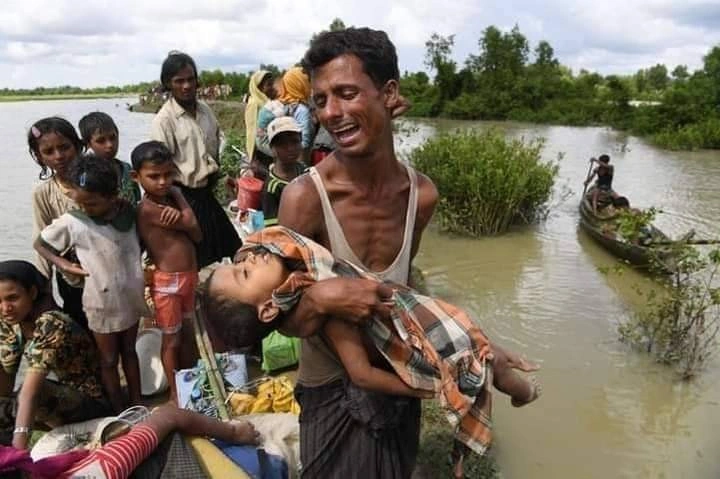THE NAF RIVER MASSACRE
I want to bring back this story about Rohingya as victims of genocide—in the way we see genocide happening all over the world today. We’ve seen it in Palestine and are seeing it in many places elsewhere. People who had become trapped and helpless by those who want to destroy them.
What is happening to the Rohingya is no different from what is happening all over the world. And yet they have been forgotten as a people that need to have the attention of the world—attention that is long overdue.
They are a people who are only hoping for a place to call home where they could carry on their traditions and the way they had always worshiped. But so far, they have not found acceptance anywhere. They are stateless, their identity stolen along with their citizenship—their right to belong, their right to have a place in the world like other human beings.
It’s all the result of religious differences. If only the world’s people would learn to look at the man who is an example of unconditional love we need to follow. especially for those who are rejected, persecuted, and discriminated against, NO MATTER WHO THEY ARE, WHERE THEY’RE FROM, OR HOW THEY WORSHIP
The NAF RIVER STORY, as told by Rohingya writer/photographer, Khin Maung Soe:
On August 5, 2024, as intense fighting erupted in Maungdaw Township, Rakhine State, Myanmar. A large number of Rohingya civilians fled toward the Naf River, the narrow border river separating Myanmar and Bangladesh, in an effort to escape the violence.
We were forced to flee from our homeland in Arakan because the fear of the Myanmar military’s operations was everywhere. Villages burned behind us, and the sound of gunfire chased us toward the Naf River. Families ran barefoot, carrying only what they could hold, some with children on their backs and elders leaning on their shoulders.
The river became our only hope, a dangerous line between death and survival.
While waiting for boats to cross into Bangladesh, many were attacked by drone strikes, mortars, and artillery, resulting in hundreds of deaths, including women and children. Boats capsized or were bombed, causing many more to drown.
As we tried to cross, the current was strong, and boats were too crowded. In the chaos, a small child slipped from a father’s arms and died before our eyes. His cries still echo in the silence of the night. That day, many lives were lost in the river, even as countless others made it across to Bangladesh with nothing but their breath.
The Naf River became both a grave and a path to life. On the border, thousands of people collapsed in exhaustion, broken by grief but still alive. Our escape was not freedom, but survival. We carried the pain of those we lost, and the memory of that child’s last moment became a wound in every heart.

Leave a Reply